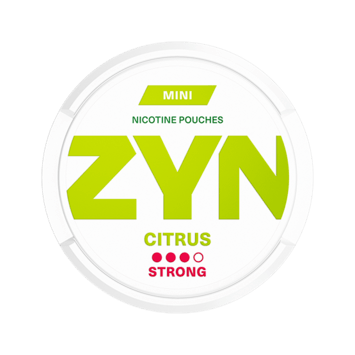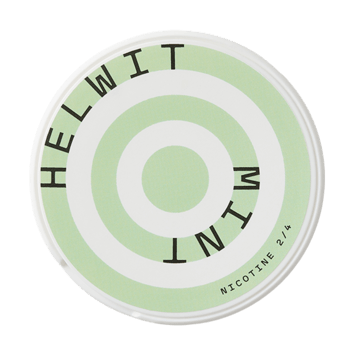What You Need to Know About How long does it take for nicotine to leave your system?
Philip Plainstein

Nicotine can be found in your body for some time after you use it. How long it stays varies for each person. This depends on a few things, like how often you smoke or the type of test being done.
Many wonder about the time it takes for nicotine to clear the body. It is not easy to say for sure. Nicotine may show up in tests for different lengths of time. After you use nicotine, your body changes it into cotinine, which stays longer. Tests can use blood, urine, saliva, or hair samples to check.
The time for nicotine to leave can change based on a few things. It leaves your blood in 1 to 3 days. But cotinine might need 1 to 10 days to go away. In urine, nothing shows after 3 to 4 days from your last use. Yet, if you use menthol or are near someone who does, cotinine could show up for longer. Saliva tests can see cotinine for 4 days. Hair tests show if you used tobacco for 1 to 3 months, and nicotine for up to 1 year.
Key Takeaways:
- Nicotine can be in your body for a while, showing in tests of blood, urine, saliva, or hair.
- Cotinine, a nicotine by-product, lasts longer and is better for testing.
- How long nicotine stays varies; it leaves blood in 1 to 3 days, and cotinine in 1 to 10 days.
- Urine tests don’t show nicotine or cotinine after 3 to 4 days of quitting. But, with menthol, it might be longer.
- Saliva can find cotinine for 4 days. Hair can show tobacco use over 1 to 3 months, and nicotine up to 12 months.
Nicotine Detection in Urine
Urine tests are often used to find nicotine in our bodies. Specifically, these tests check for cotinine. It is a ‘leftover’ from nicotine that stays in our system even after nicotine is gone. Cotinine lasts about 16 to 40 hours in our bodies. So, urine tests can show if we’ve had nicotine in the last 3 days.
These tests are good at finding high amounts of cotinine. They do better than tests with blood or saliva. So, they are great for knowing if someone has been exposed to nicotine. If a urine test is positive, it means someone has had nicotine recently. A negative test shows there’s been no smoking or secondhand smoke lately.
“The sensitivity and specificity of cotinine urine tests make them useful for detecting smoking in the previous 72 hours.”
The levels for what’s considered a positive test can change by lab. This is because labs use different ways to test and different limits. Talk to your doctor or the lab doing the test to really understand what the test results mean.
In short, urine tests can tell us if there has been recent nicotine exposure. They are a good way to learn about smoking or tobacco use in the last 3 days.
Nicotine Detection in Blood and Saliva
Blood and saliva are good for finding nicotine. Cotinine is often picked for tests. It lasts longer, showing nicotine levels better. Tests in blood, urine, and saliva find nicotine at different times. In blood, nicotine’s signal fades in a day.
Saliva and blood may show less cotinine than urine. This means they might test positive sooner. How long cotinine stays in blood changes with people. Genetic differences and how much nicotine someone uses matter a lot. Blood tests can check nicotine in two ways. They might also find anabasine, a part of nicotine.
Nicotine Detection in Hair Follicles
Traces of nicotine can stay in hair for weeks, months, or even years. This happens after the last time you were near it. Hair tests can tell if you have used tobacco for a long time. They are very good at finding nicotine and its by-product, cotinine, in hair for 1 to 3 months after you stopped smoking. Also, these tests can find nicotine in hair even a year later.
Hair tests are not used as much as urine, saliva, or blood tests. But they do have a big benefit. They show nicotine use for a long time. This can help when other tests can’t be done or when they don’t give clear results. But, the link between hair tests and blood tests might not always be right.
If someone has been around tobacco but not actually smoked, their hair can still show nicotine. This comes from breathing in smoke from others.
| Testing Method | Detection Period for Nicotine | Detection Period for Cotinine |
|---|---|---|
| Hair Testing | Up to 12 months | Up to 1 to 3 months after quitting |
| Urine Testing | Up to 3 to 4 days after quitting | No longer detectable after 3 to 4 days |
| Saliva Testing | Up to 4 days | Up to 4 days |
| Blood Testing | Within 1 to 3 days | Up to 1 day |
The table shows hair tests can see nicotine and cotinine for a longer time than others.
Factors Affecting Nicotine Clearance
Many things can change how long nicotine stays in the body. This includes:
- The type and how often you use or deal with nicotine
- Your genes
- How well your liver works
- Your age
- Your diet
- Medicine you take
- Being male or female can make a difference
- Your kidneys
Tobacco or nicotine products have different nicotine levels. How often you use them affects the cotinine amount in pee. Genes can change how fast the body uses cotinine. Your liver’s health is important in removing cotinine. Age, diet, and medicine can also change this. Studies show women clear nicotine faster, and their cotinine levels are higher. Kidneys help by removing nicotine from the body too.
“lots of things can influence how fast or slow the body gets rid of nicotine. Things like different genes and liver health matter a lot. Also, how old, what you eat, and medicine you take can have an effect. Women usually clear nicotine quicker, and they get more cotinine.”
Here’s a table to show what impacts nicotine clearance:
| Factors | Impact on Nicotine Clearance |
|---|---|
| Your Genes | Can change how fast cotinine is used up |
| Your Liver’s Health | Is key in getting rid of cotinine |
| Your Age | Might change how the body uses nicotine |
| What You Eat | Affects how your body clears nicotine |
| The Medicine You Take | Could change how nicotine is handled |
| Differences in Gender and Hormones | Women may get rid of nicotine faster |
| Your Kidneys | Help remove nicotine by pee |
Know how these factors work helps us understand nicotine clearance better. It shows why it’s good to think about the person’s needs when helping them quit smoking.
Clearing Nicotine from the Body
To remove nicotine effectively, stopping tobacco or nicotine products is key. Once you stop, your body works on getting rid of nicotine.
Ways to speed this up include:
- Water is great for detox as it flushes nicotine out through your pee.
- Exercise helps your body use up nicotine faster by raising your metabolism.
- Fruits and veggies are full of antioxidants, which help your body break down nicotine.
Stopping tobacco can cause withdrawal symptoms. These might be cravings, feeling hungry, tiredness, or constipation. You could also feel down, anxious, or easily annoyed.
Using nicotine replacement therapy (NRT) can make quitting easier. NRT uses items like patches, gums, or inhalers to give your body some nicotine. This way, it’s easier to fight the urge to smoke.
Quitting smoking was tough, but with NRT, I handled it well and quit for good.
Quitting smoking is hard, but it’s worth it. With willpower, support, and smart use of NRT, you can beat nicotine and have a better, smoke-free life.
Side Effects of Nicotine Withdrawal
Nicotine withdrawal brings on physical, mental, and emotional changes. These can vary a lot. The length and amount of nicotine or tobacco use play a big part. Knowing and dealing with these symptoms is key if you want to quit. And if you handle them well, quitting is more likely to work.
Physical Withdrawal Symptoms
When you stop smoking, you might feel these physical changes:
- Increased appetite: You might want to eat more, especially sugary or starchy foods.
- Cravings: You’d really want to smoke, which may make you edgy.
- Cough: You might cough more as your body cleans out the smoking leftovers.
- Headaches: You may get some head pain from blood and oxygen changes.
- Dizziness: Feeling unsteady is common as your body loses nicotine.
- Fatigue: Feeling tired is usual as you quit nicotine’s energy boost.
- Constipation: Nicotine withdrawal can slow digestion, causing this issue.
Mental Withdrawal Symptoms
Mood and mind changes are part of quitting:
- Anxiety: You may feel stressed or uneasy.
- Depression: Sadness, low spirits, or not enjoying things might hit you.
- Irritability: You might get very annoyed, adding to stress.
- Difficulty concentrating: It could be hard to focus or stay on task.
These feelings can be strong in the first days after quitting. But they get better over time. Being ready for these challenges makes a big difference.
“Quitting smoking takes strength and resilience. Support from friends, family, or professionals is key.”
To ease withdrawal, some find nicotine replacement helpful. Things like patches, gum, and lozenges can cut cravings. Support groups or therapy can also help a lot.
By handling both the body and mental parts of quitting, you can aim for a brighter, smoke-free path.
Timeline of Nicotine Withdrawal
Nicotine withdrawal can last different times for each person. This depends on how much someone smoked before and how many cigarettes they used to have every day. However, most people go through a similar process.
- The first week: Quitting can be tough in the first week. You might feel strong cravings, headaches, and struggle to sleep. This is because nicotine leaves your body. You may also feel very irritable and have mood swings as your body gets used to no nicotine.
- The second week: After the first week, physical symptoms lessen. But, you might still face mental and emotional challenges. Sadness, worry, and being easily upset are common. It’s key to get help and use ways to cope during this time.
- Several weeks: With time, symptoms improve both physically and mentally. Yet, you might still get some cravings or changeable moods. Staying patient and strong helps a lot at this stage.
It’s key to know that each person’s withdrawal can look different. This is influenced by how long and how much they used tobacco. Everyone’s road to quitting is unique. Getting help from doctors and using options like nicotine replacement helps a lot.
| Week | Physical Symptoms | Mental and Emotional Challenges |
|---|---|---|
| 1 | Cravings, headaches, insomnia | Irritability, mood swings |
| 2 | Physical symptoms subside | Anxiety, depression, irritability |
| Several weeks | Occasional cravings | Mood fluctuations |
Recovery from Nicotine Withdrawal
After quitting smoking, your body and mind start to heal. It’s important to focus on both parts for a full recovery from nicotine withdrawal.
Physical Recovery
Changes in your body, like wanting to eat more and coughing, will get better with time.
As you get used to no nicotine, you’ll feel these symptoms lessen.
Dealing with wanting to smoke is part of getting better physically. These urges might hang around, but they’ll get weaker and happen less often. Staying motivated is key, as is remembering the good of quitting.
Celebrate the wins. Making it through the first week smoke-free is a big deal. Each goal you hit gets you nearer to kicking nicotine for good.
Mental Recovery
Healing your mind and mood takes time. It’s fine to take it slow. You might face challenges like anxiety, feeling blue, getting annoyed easily, or finding it hard to focus.
After weeks or months, these feelings will lift. Asking for help from addiction experts is a smart move. They can offer tips and support as you heal.
Using nicotine replacements can make your journey easier. Patches or gum cut down on your need to smoke. This helps with the desire to smoke and lessens withdrawal symptoms.
Getting over nicotine withdrawal needs willpower, help, and a plan for both your body and mind. With effort, time, and the right help, you can beat smoking and live a healthier life without it.
The Journey to Quitting Smoking
Quitting smoking is hard but very worth it. It can make you much healthier and living more enjoyable. There are helpful tips for this path.
First, set your own goals. You might want to quit all at once. Or, you might want to smoke less bit by bit. Having a clear aim helps you focus.
Friends, family, or doctors can give great advice and cheer you on. They are there to help, so don’t be afraid to ask for their support.
Using things like nicotine patches or gum can make quitting easier. They cut down on your cravings and bad feelings. Also, find things that keep you busy and happy to avoid smoking.
Stopping smoking might not happen all at once. You might start again before fully quitting. This is okay. It’s just a step in learning. Keep trying, that’s the key.
By staying strong and with help, you can beat this. Don’t let little slip-ups get you down. Every day without smoking is a victory. You can do this and live life without cigarettes.









